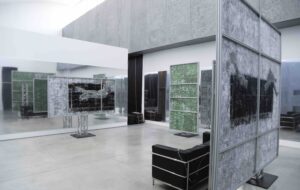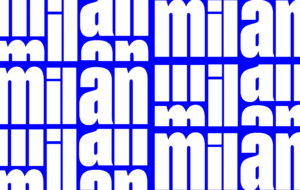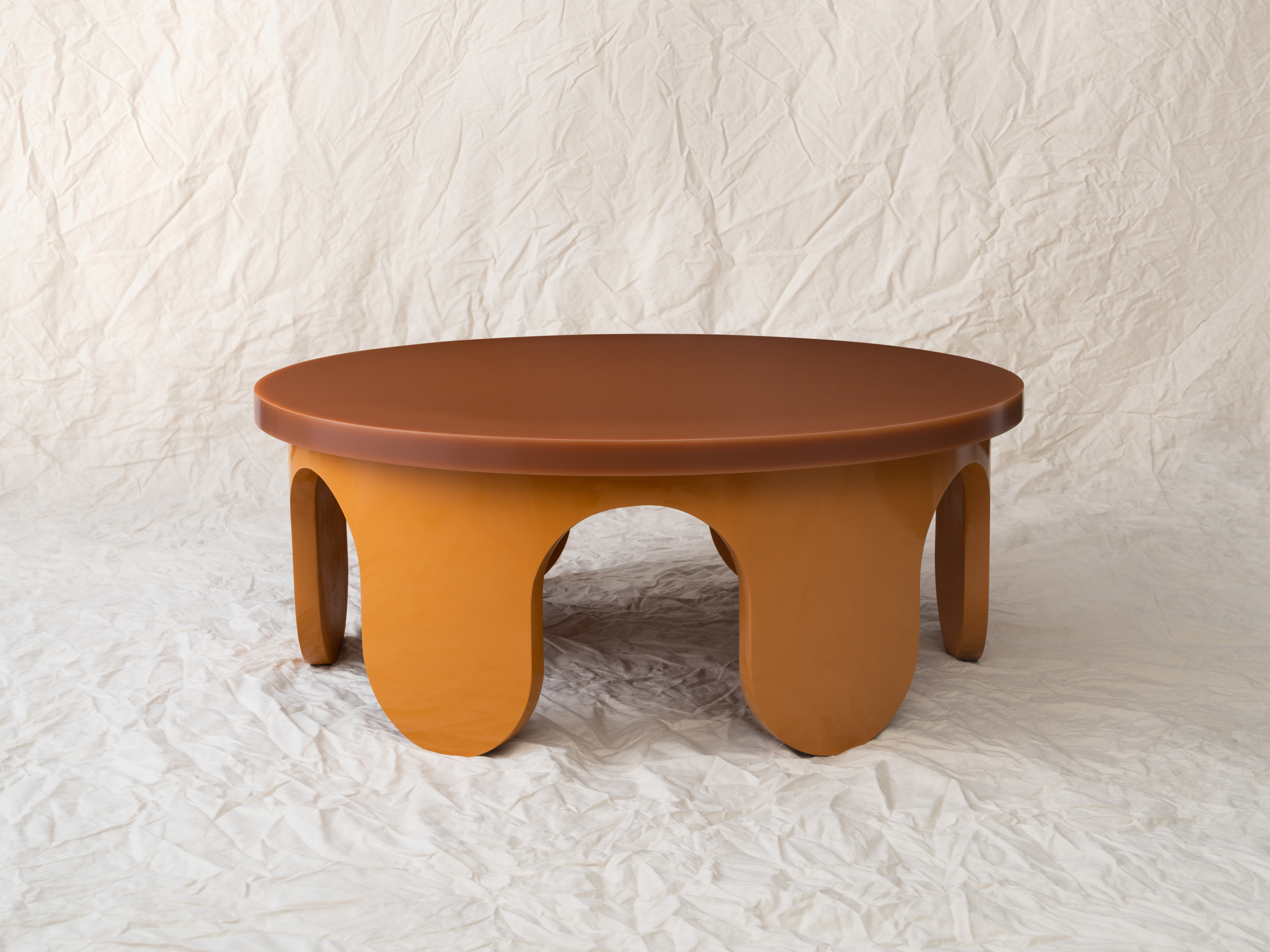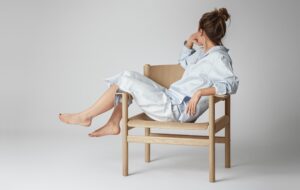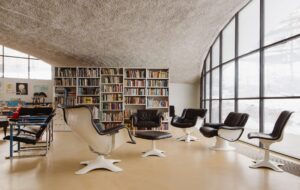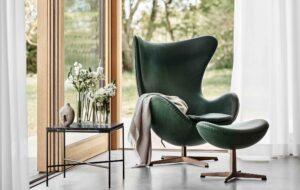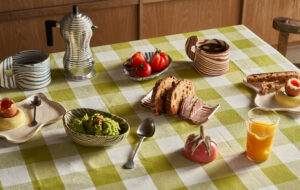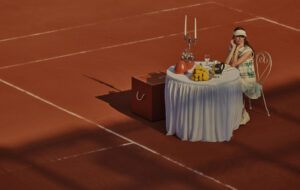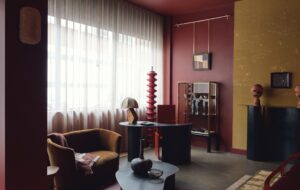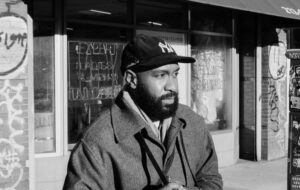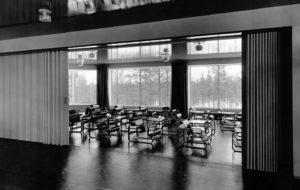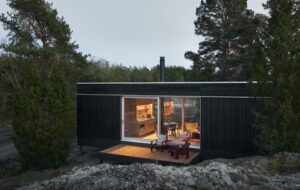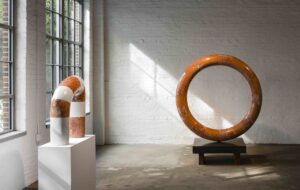



words Justin McGuirk
Constantin Boym and his wife are discussing Seinfeld.
“It’s about making people aware of these funny little things in everyday life,” says the designer. “By pinpointing these things they become absolutely funny, even though they’re not particularly jokes.” The 1990s TV sitcom represents for him a particularly Jewish perception of the world, a predisposition to look at things with an outsider’s sensibility. And it happens to be an outlook that Boym, a Russian Jewish émigré living in New York, feels is encapsulated in his products.
Laurene Leon Boym, Constantin’s partner in Boym Partners, is laughing. The analogy is not new to her but she is still evidently tickled that a “serious” conversation about design can encompass this apartment-set comedy with the bad clothes and the big hair. Though Laurene shares her husband’s Russian Jewish heritage, she is actually from New Jersey, and is trying to steer the conversation towards Jackass.
“Who’s that guy on MTV with the incredibly black humour?” asks Constantin.
“Johnny Knoxville? Yeah, Jackass. We like Jackass,” Laurene replies.
“No, it’s not him is it?”
“Yes, we rented it – Jackass the Movie.”
“Noooooooh. Nononononono. I’ll get back to you on that,” he says to me, as though it were a matter of some urgency.
As product designers go, Constantin Boym is something of a rarity in America. Boym Partners is the kind of small independent practice somehow far more common in Europe, the kind that sees design as a form of cultural commentary rather than as the satisfier of commerce’s bottomless appetite for novelty. His work is marked by its forays into marginal design genres, by its appropriation of cheap everyday objects and especially by a fascination with America – not just the grand idea of America but also its stuff. And yet just when it seems easy enough to form a neat definition of his work as cerebral and anti-corporate, he will confound it by doing something unpredictable, like designing the McDonald’s of the future.
Boym Partners is located in a bland office block in TriBeCa, above a Manhattan Mini Storage warehouse. The office, which Boym describes as more of a “thinking” space, is tiny. But then Boym is delicately sized. His pencil moustache and goatee give him the look of a Russian count, and he smiles almost permanently, so that you can even hear it in the shape of his words. And after 25 years in America he still has a Russian accent.
“It has to do with the fact that the market is completely saturated – with everything,” he says animatedly. We are discussing the rise of the collectable design market, in which today’s most famous designers can sell one-off pieces for hundreds of thousands of dollars. Boym’s work has moved in the opposite direction, away from grandeur and exclusivity to kitsch. He is perhaps best known for a series of souvenirs called Buildings of Disaster. These are miniature bonded-nickel replicas of the sites of famous 20th-century cataclysms: the Chernobyl nuclear reactor, the Texas School Book Depository in Dallas, from where Kennedy was shot, and the World Trade Centre (first an edition marking the 1993 bombing and then a September 11 2001 edition) among others. These limited edition objects prick the value systems that tell us both what a “design object” is – it is certainly not a souvenir – and what is acceptable taste.
It is characteristic of the Boyms to plumb “low” culture in this way. Souvenirs are just the kind of marginalia ripe for their reassessment. “The souvenir would never be in a scholarly book or an exhibition, and yet arguably it’s one of the most important product types today because it is related very clearly to tourism, which is the biggest industry in the world,” says Boym.
The Buildings of Disaster demand some kind of emotional response. But then Boym, who has also produced a series of souvenir plates for New York’s Cooper-Hewitt Museum, argues that one has an emotional connection with anything one collects. Collecting clearly fascinates him. “People spend lifetimes and huge amounts of money collecting, and it cannot be dismissed. It’s a very special function that human beings have – you know, to select things.”
One would automatically assume that there was something distasteful about commemorating human disaster with what look like souvenir shop memorabilia. Yet the September 11 memorial set was hugely popular. “Literally on September 12 people were calling and asking for the souvenir building [the 1993 edition], which was almost obscene,” says Boym. The piece was sold only in a few design stores – where it would be handled in a “dignified” manner – and the proceeds were donated to the September 11th Fund. This sensitivity was intended to counter the simple shock value of seeing an object like that in a store.
Taste is an issue that Boym cannot help confronting. Sometimes he challenges taboos unwittingly, which is easy for a foreigner in prudish America. In 2002 the Boyms produced a pair of rugs with nudes on them, called Sex Rugs, and only
the one with the more tasteful rear view got displayed. No one would exhibit the full frontal, with its raised shag of ginger pubic hair. “People were, like, sooo offended,” says Laurene, while her husband rails against “censorship”.
It doesn’t seem to occur to them that what is potentially provocative about the rugs is not the nudity but the graphic treatment – the evocation of what in America are called Raggedy Ann dolls, with their locks of string; the conflation of a playroom aesthetic with pubic hair. But the rugs, even with their references to 1970s feminist art, were clearly made with a mischievous sense of humour.
Humour is a tangible presence in the Boyms’ work, but not in the way that it is in contemporary Dutch or British design. It is not the pun, the one-liner. It is the simple observation of everyday human artifacts and behaviour – what Boym describes as the Jewish outlook, and what in the Buildings of Disaster series might be seen as black humour. Like some comedians, he’d rather not analyse it, but Laurene takes a stab.
“I mean, the whole idea of having a culture of humour is sort of radical, I think, because most design is humourless,” she says.
“But I’m very careful about this humour business because it means too many things,” replies her husband. Throughout the interview, as Laurene comes and goes, they perform a textbook double-act of the tensions inherent in relationships that are both creative and marital.
“I guess it’s more about an undercurrent, you know? Yeah … okay, well, whatever, scratch it off the record,” she continues with mock dejection.
“But we’ve discussed it already.”
“Fine! Did you talk about your love for America?”
Boym emigrated to America from the Soviet Union in 1981. He had studied architecture in Moscow and then exploited a loophole in the
Soviet system that allowed some people to emigrate so as to reunite families (in fact, this was bogus in Boym’s case: “My mother and father were very happy living with me in Moscow”). He chose America for what he describes as “the excitement of trespassing.” “It was a dangerous place,” he says theatrically, “a forbidden place
for somebody who grew up in the Soviet Union.”
Boym still has faith in America as the land where anything is possible, and – “in spite of all the shit which is going on in this country” – named his latest book, a collection of his work and thoughts on design, “America”. It is full of everyday things either redesigned or appropriated. Boym left architecture for design because he “realized all the big ideas were possible to express in small forms”, and his adopted home has fueled his love of humble objects. This is a country where he can enthuse over the design of a spatula, and where he and Laurene will wander the aisles of large hardware stores just for fun.
The Boyms have mined the readymade for years. They’ve made clocks in which the dials were six rubber bands or 12 telescopic antennae. More recently they’ve made lamps out of plumbing pipe (in “America” Boym quotes Marcel Duchamp’s observation that America’s chief contributions to culture were its bridges and its plumbing). Other products evoke recognizable materials from the urban environment. One such is a pen that mimics the diamond-plate steel used on bridges and walkways. A more recent case is a paper cup made for the MoMA shop that replicates the crumpled brown paper bag used to conceal alcohol bottles in the street. These works aspire to reflect a specific condition of the American city.
But Boym is now bored of readymades. He has just come back two months in Rome as a Resident of the American Academy, and exposure to the old world has clearly affected him. Suddenly he wants his work to be about beauty and emotion, but he’s not sure how. “I don’t want to force it.”
However, there is one new departure that he can talk about, and it couldn’t be further removed from the inspiration of historic Rome: the Boyms are designing McDonald’s restaurants. They are one of a group of consultants outlining potential design directions to be adopted by 2012. Their proposal is to make the experience of visiting a McDonald’s as appealing, or at least as tolerable, for adults as it is for children, rather than having restaurants where the children sit in playpens “while the parents sit and suffer”. The strategy has been borrowed from the film industry, and particularly the recent spate of animated films in which, Boym says, “You don’t even know whether it’s more for children or for adults.”
Given their populist focus and taste for Americana, McDonald’s is a logical client for the Boyms. “Whether it’s Apple or Nike or McDonald’s – this is where American design is happening,” says Constantin. Laurene puts it her own way: “It’s totally rad that the Boyms are, like, working for McDonald’s,” she says. “It’s sort of a dream for us.”

